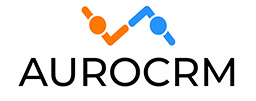Do you know that 97% – 98% of users stay anonymous on your website? This means that, while so much time and money are expended on driving visitors to the website, only 2% – 5% of the audience is typically identified as prospective customers by businesses.
Turning anonymous visitors into customers is one of the greatest obstacles for enterprises. Without engaging in knowing who their website visitors are, most businesses risk putting a lot of money that might go waste. Finding out where and how visitors come to your site, is an essential part of your customer management process.
You’ll get a lot of website traffic, but very few people are going to fill out a questionnaire, leave their email, and convert. Furthermore, the anonymous prospect is bombarded with a vast amount of marketing messages every day.
By delivering personalized content campaigns that can resonate with your prospective customers, you can cut through the noise. Only communications that will speak to each particular customer have the potential to be heard.
In this blog, we’ll be exploring some ideas on how to track anonymous website visitors and convert them into customers.
1. Reverse IP
Another way of monitoring and identifying anonymous visitors is Reverse IP lookup. With Reverse IP, you can find where the user came from, who is visiting your site (name and address), identify all the content that each visitor has accessed, and eventually identify where they are in the shopping process.
Reverse IP search monitors visitors and can produce reports on visitors with substantial behavioral details. You can also identify their keyword search information, time spent on a particular page on your website, the percentage of new sessions, and the bounce rate.
You know what the visitors are interested in and can cater to their search activity, even if you can not identify them.
2. Use Google Analytics
Google Analytics provides many tools that help you better analyze statistics such as the most visited pages, the most converted pages, probable decrease, and attribution data for conversion so that you can get more insight into where the most valuable customers come from.
You can sell goods, services, or even other content that may supplement the article if users seem interested in a specific post.
If you find the bounce rate of a particular page to be high, you might want to improve it. For instance, you can estimate, evaluate, and measure which elements might not be performing well if you see a sharp drop in visitor activity from page to page. This may be because of slow load times, inaccurate reporting, improper optimization of the layout, or bad calls to action.
Also Read: How Can CRM Help To Develop Your Business
3. Geo Tracking
Image source: bellestrategies.com
Tracking the location of your guests (if they give consent) could be another pertinent factor in finding those ‘hidden’ visitors.
To map the geographic location of your visitors, Google Analytics uses IP addresses or Wi-Fi / GPS data. With geo-tracking, you know where the users come from all over the world. Knowing where the clicks are coming from is a great advantage.
It indicates, on the one hand, where you need to invest your money. If a lot of your top conversion traffic comes from a certain region, this is where your advertising should be focused.
4. Gated Content
Using gated content (assets such as white papers or webinars) is the most common answer to converting unknown website users into leads.
However, with such material on your site, it is not easy to compel individuals to share their contact details. You must rely on the persuasiveness of your assets. This ensures that anonymous visitors may believe that your personal content has enough meaning to make their data accessible to you.
Of course, for anonymous visitors, there are many options to make this method more efficient. One of the simplest and most successful ways to get more individuals to fill out forms, whether they wish to sign up for an email list, webinar, or anything else, is to reduce the number of fields you have to fill up.
Another way to increase the probability of more leads being generated is to actually produce more gated content. The rationale is that the more content there is, the greater the chance of people finding it and signing up for it.
5. Create Engagement Points
Engagement points are sections on your website, where you respond, answer questions, and offer support. It is possible to break down engagement points into two major categories: on-site and offsite.
Onsite engagement centers around messaging, tips, or tailored pop-up interfaces. All these touchpoints will build the trust of a prospective customer in your company.
Off-site engagement covers all of the brand’s engagement off your website, such as social media.
A vast majority of global customers put greater faith in friends and family, word-of-mouth, and feedback than all other types of marketing. By reacting to inquiries, running competitions, and building feedback loops for prospective clients, companies can create touchpoints outside of their website.
While on the surface, these interaction points may not seem significant, they are crucial for recognizing anonymous users to the website so that you can convert them into known customers.
Conclusion
It is an evolving method to turn anonymous visitors into established clients and is one aspect of your market that you will continue to develop over time. Your ability to provide a personalized environment needed to convert cold visitors into warmer leads is the secret to improved conversions.
Through these methods, you can find and track anonymous visitors. Once an anonymous visitor signs up on your website, they can be traced through the cookies and matched with any identifiable information you have in your CRM software.


